What’s Happening Here?
I don’t know if this holds true for you, but according to subsriber feedback I receive, the most favorite feature of Perennial Pulse is the diagnostic challenge I like to call “What’s Happening Here?”
Just in case there’s some newbies in the house (thanks for subscribing by the way), “What’s Happening Here?” is a game we play in several of the newsletters where I test your diagnostic skills to determine the cause of symptoms from an image I share, or on occasion, solve an issue one of our fellow subscribers (anonymous) is facing. Sound like fun? Let’s get right to this week’s challenge.
Check this out:
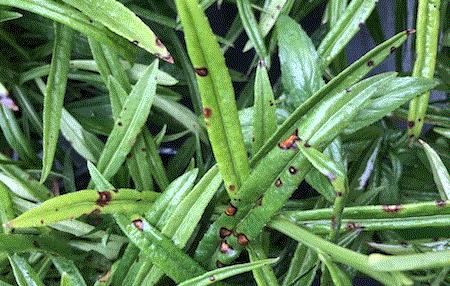
This is a crop of Campanula persicifolia I recently observed in the Pacific Northwest. The spots you see have been observed on previous crops this grower has produced, but I must admit that I've not seen this before on campanula. Although I appreciate seeing a new problem, I’m sure the grower experiencing these symptoms is not anywhere near as enthusiastic as I am.
Perhaps this issue is more widespread than I think. Have you observed this before? If so, maybe this is an easy challenge; many of you may be able to narrow down its cause. But I suspect that most readers won't be able to come up with the exact answer. Perhaps I’m wrong, but the time has come for me to ask, “What’s Happening Here?”
Enjoy the newsletter. I’ll reveal the answer at the end. Please read the great articles I’ve put together and don’t just skip to the end (I wouldn’t want you to miss anything).

Plants That Repel Mosquitos
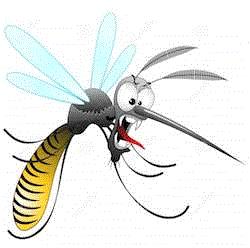
www.dreamstime.com
Summer is almost here and that means many of us will be spending more time outdoors. Depending on where you live and the weather you'll receive, several of us are at risk of becoming a meal for those pesky mosquitos. Keeping that in mind and knowing that we're all in horticulture, reminds me that there are several perennials and herbs that can be used to thwart off or repel these nuisances.
I'm not sure how well these work, but here's a listing of several plants that have been known to offer some repellency properties so that perhaps you can better enjoy your time in the garden or outdoors. Having these plants in your landscape may be helpful, but many of them can offer more repellency by crushing the leaves and flowers to release their pungent, bug-repelling essential oils. The leaves of many of them can be rubbed on your skin or clothing (this isn't advisable for all plants or individuals) to deter the swarms of mosquitos from interfering with your summer activities.
-
Basil (Ocimum basilicum)—Recent studies have shown basil extract to be highly toxic to mosquito larvae. Consider planting some near your water features to potentially deter adults from laying eggs there. Lemon and cinnamon basil are the best options for repelling mosquitos.
-
Bay Laurel (Laurus nobilis)—This herb is commonly used to repel various insects, including mosquitos. I hear bay laurel can also be used to deter ants, cockroaches, flies and wasps.
-
Catnip (Nepeta cataria)—Cats may find catnip irresistible, but with mosquitos it's quite the opposite—they avoid it at all costs. The oil in nepeta (nepetalactone) has been found to be 10 times more effective than DEET in repelling mosquitos and the crushed leaves can be applied to skin.
-
Citronella Grass (Cymbopogon nardus)—If you've heard of or used citronella oil, this is the plant it's derived from. Citronella oil is more effective as a repellent than DEET, however, the repelling power slowly decreases after an hour or so. It can safely be reapplied to your skin or clothing every hour or two to enjoy extended pest-free time outdoors.
-
Garlic (Allium sativum)—Allicin, which gives garlic its distinct smell, also works as a deterrent against mosquitos. If you're like me, allicin moves through my skin after consuming garlic. Unfortunately, we'd have to eat huge amounts to get the repellency benefit.
-
Lavender (Lavandula spp.)—Lavender essential oils not only smell nice, but they've been shown to be just as effective as DEET for repelling mosquitos. Yet another way, lavender promotes calmness (no more cursing and swatting at mosquitos).
-
Lemon Balm (Melisa officinalis)—The natural compounds in lemon balm can also be used to repel mosquitos. Interestingly, researchers have found an extract containing both lemon balm and basil to be extremely toxic to adult mosquitos; they would die whether they inhaled it or came into direct contact with it.
-
Pennyroyal (Mentha pulegium)—The oils and crushed leaves of this plant are often used to repel fleas on pets (homemade flea collars), as well as for repelling mosquitos. From my understanding, it's also a pretty good tick repellant. Beware: Some people are super sensitive to its natural oils.
-
Peppermint (Mentha x piperita)—Similar to basil, peppermint essential oils have been shown to be toxic to mosquito larvae. Peppermint oil is also highly effective at repelling them when rubbed on the skin. If you do happen to get bit, consider rubbing a peppermint leaf directly on the bite for some relief.
-
Rosemary (Rosmarinus officinalis)—It may be a great culinary herb for us, but mosquitos would rather avoid it. Rosemary can be tossed in a campfire for an aromatic insect repellent or its oils can be applied to the skin.
As you can see, there are many herbs and perennials that can be used at some capacity for repelling mosquitos. Some of these plants work better than others, but having them in the garden where you'll be working or accessible should you need a few leaves could make your time outdoors more enjoyable this summer.
Again, most of these plants can be safely applied to the skin, however, each person is different. Therefore, I advise you to do a little more research before going hog wild with any of them. Test them on a small area of your skin before completely covering your body with natural plant oils. Most importantly, consult with your doctor or dermatologist to confirm what's best for you and your skin.
Whatever you do or wherever you go, I hope you have a great, relaxing, enjoyable and bug-free summer.

Darwin Perennials Day
Spring is well underway, and before you know it, summer will be here. I’ve gotten into the tradition of kickin’ off summer by attending Darwin Perennials Day at the scenic Ball Horticultural headquarters in West Chicago, Illinois. This year the 10th Annual Darwin Perennials Day will be held on Wednesday, June 19 from 8:00 a.m. to 3:00 p.m. That’s just two days before summer’s officially here.
 2018 Darwin Perennials Day
2018 Darwin Perennials Day
Each year, 300 to 400 growers, retailers and landscapers attend Darwin Perennials Day. This year, attendees can meet with over 20 perennial suppliers and see what new products they’ll be offering in 2020, walk through the extensive Zone 5 hardiness trials, see the 2020 Darwin Perennials introductions, discover the 2020 first-year flowering perennials from Kieft Seed, observe the latest roses and flowering shrubs from Star Roses and Plants, discover the Herb-A-Licious program, how to execute a successful fall perennials program and so much more.
There will also be two must-see presentations: “Top-Rated Plants and Trials from the Chicago Botanic Garden” by Richard Hawke, Plant Evaluation Manager and Associate Scientist, Chicago Botanic Gardens; and “Grow like a Pro” by Darwin Perennials Technical Advisors Chris Fifo and Dr. Todd Cavins.
As you can see, Darwin Perennials Day is a great way to launch your summer.
Visit www.darwinperennialsday.com for complete event and registration information.

Sedum Takes Top Prize
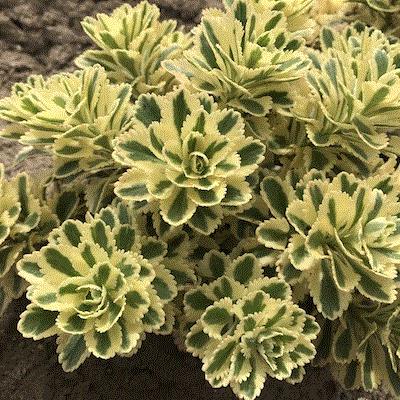
Walters Gardens, Inc.
Hot of the press! Sedum takesimense Atlantis won Plant of the Year 2019 at the world famous Chelsea Flower Show in London, England. This prestigious award is given to the top new plant that's recognized as having a high level of innovation, excellence, impact and appeal.
Atlantis was discovered as a sport by Dave Mackenzie of Hortech Inc. in West Michigan. With its distinctly variegated foliage, Atlantis is an eye-catchingly (is that a word?) beautiful groundcover. It's a low-spreading sedum (4- to 6-in. tall by 12-in. wide) with small, serrated leaves that are dark green with very wide creamy-yellow margins. As an added bonus, this attractive drought-tolerant sedum develops yellow flowers in the mid-summer, which the pollinators just love. Hardy to Zone 4.
How Do You Use Neonics?
Your answer to this question is of great interest to AmericanHort and the Horticultural Research Institute (HRI). In fact, they're conducting a survey to gather information to better understand the industry’s uses of specific neonicotinoids.
All industry professionals are being asked to participate in this anonymous, short (two-minute) survey. It’s anticipated the EPA will be announcing proposed registration changes for these products in the near future.
Neonics under the radar include:
-
Clothianidin (Arena)
-
Dinotefuran (Safari)
-
Imidacloprid (Merit, Marathon, others)
-
Thiamethoxam (Meridian, Flagship)
Your responses will greatly help them to better represent you, your needs and the needs of our industry as a whole.
If you’ve used these tools in the past, currently use them or would like the option of using these products in the future, please participate in this important survey. It should only take two minutes of your time and is completely anonymous. Click this link to take this important, brief survey: https://www.americanhort.org/surveys/Default.asp?id=insecticides

The Answer is ...
I hope you've had enough time to ponder the possibilities for this week's diagnostic challenge. Let's take another look at the image I shared above:
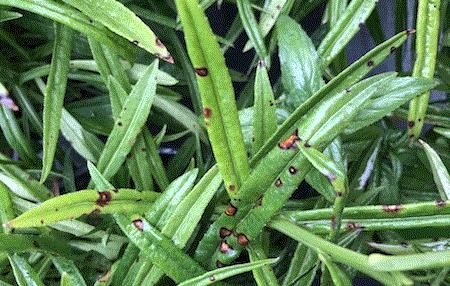
Hmmm, I think it's safe to say this is some type of leaf spot, but did you guess which one? If you answered bacterial leaf spots or the spotting is caused by the fungal pathogens cercospora or septoria, I'm sorry to tell you that your answer is wrong. However, if you answered ramularia leaf spots, you correctly diagnosed this week's challenge.
Although ramularia isn't one of the most common leaf spot pathogens, I suspect that many of you may have seen it on one crop or another over the years. Other susceptible perennials include aruncus, centranthus, digitalis, euonymus, lathyrus, lupinus, primula, salvia, scabiosa and tanacetum. Ramularia is host-specific, meaning the species of ramularia that attacks campanula is different than the one that attacks other perennials, such as salvia.
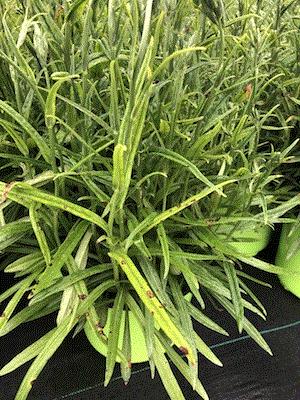
Ramularia may look different from one perennial to the next, but generally appears on the lower half of the plant as brown spots with reddish borders. Under severe infections, the leaves may shrivel and die, but the disease doesn't kill the entire plant.
As with most leaf-spot diseases, an ounce of prevention is worth a pound of cure. The most important aspect of managing ramularia leaf spots is to avoid extended periods when moisture remains on the leaves. Avoid overhead irrigation during cloudy weather, in the early morning or late in the day where the leaves are likely to remain wet for long periods of time. It's often better to water susceptible crops in the mid-morning to early afternoon when the conditions are more conducive to rapid drying of the leaves.
Fungicides can be applied to prevent or control ramularia leaf spots. It's best to make fungicide applications on a preventative basis or just as infections are beginning to occur. Some of the most effective products are those that contain boscalid, chlorothalonil, mancozeb and thiophanate methyl. Most fungicides need to be applied at 14-day intervals to effectively prevent leaf spots from occurring, particularly in scenarios with frequent overhead irrigation and/or rainfall. Refer to each fungicide's label for application rates and guidelines.




Thanks for reading this edition of Perennial Pulse. Please let me know if you have any questions or article ideas for future newsletters.
My email is ppilon@ballpublishing.com.
Take care,
Paul Pilon
Editor-at-Large
Perennial Pulse
This email was received by you and over 34,212 subscribers!
If you're interested in advertising in Perennial Pulse, contact Kim Brown ASAP and she'll hook you up.